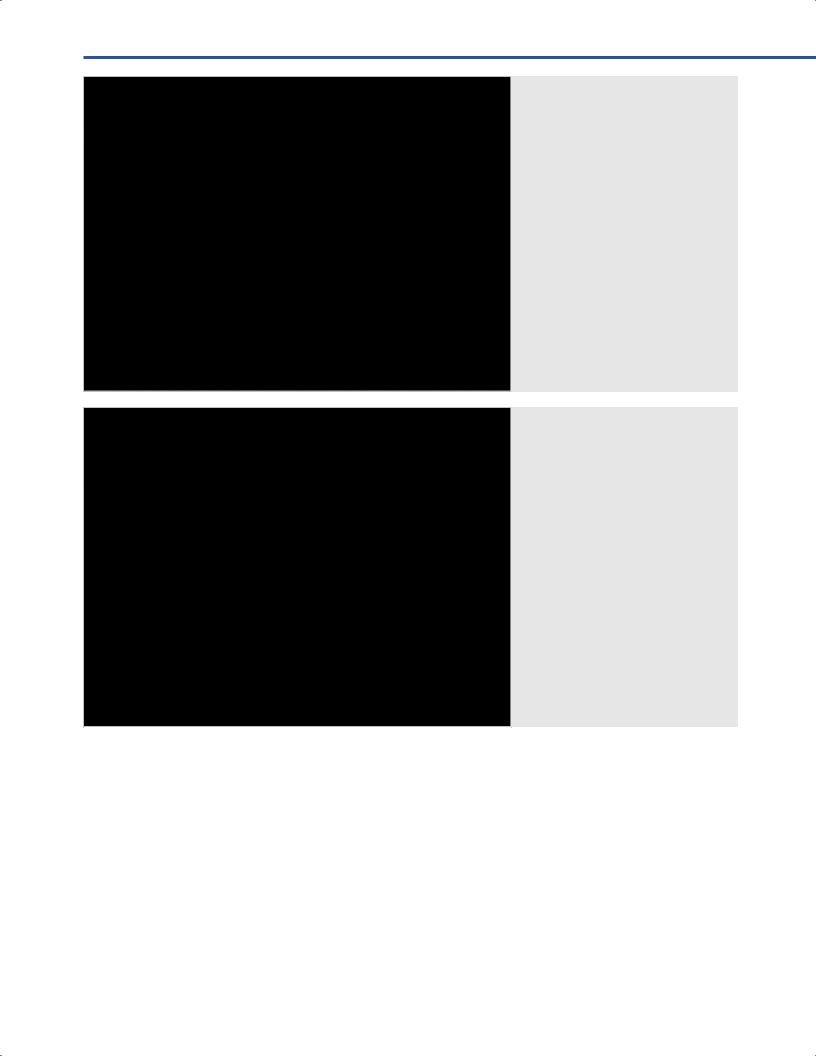
- •Operative Cranial Neurosurgical Anatomy
- •Contents
- •Foreword
- •Preface
- •Contributors
- •1 Training Models in Neurosurgery
- •2 Assessment of Surgical Exposure
- •3 Anatomical Landmarks and Cranial Anthropometry
- •4 Presurgical Planning By Images
- •5 Patient Positioning
- •6 Fundamentals of Cranial Neurosurgery
- •7 Skin Incisions, Head and Neck Soft-Tissue Dissection
- •8 Techniques of Temporal Muscle Dissection
- •9 Intraoperative Imaging
- •10 Precaruncular Approach to the Medial Orbit and Central Skull Base
- •11 Supraorbital Approach
- •12 Trans-Ciliar Approach
- •13 Lateral Orbitotomy
- •14 Frontal and Bifrontal Approach
- •15 Frontotemporal and Pterional Approach
- •16 Mini-Pterional Approach
- •17 Combined Orbito-Zygomatic Approaches
- •18 Midline Interhemispheric Approach
- •19 Temporal Approach and Variants
- •20 Intradural Subtemporal Approach
- •21 Extradural Subtemporal Transzygomatic Approach
- •22 Occipital Approach
- •23 Supracerebellar Infratentorial Approach
- •24 Endoscopic Approach to Pineal Region
- •25 Midline Suboccipital Approach
- •26 Retrosigmoid Approach
- •27 Endoscopic Retrosigmoid Approach
- •29 Trans-Frontal-Sinus Subcranial Approach
- •30 Transbasal and Extended Subfrontal Bilateral Approach
- •32 Surgical Anatomy of the Petrous Bone
- •33 Anterior Petrosectomy
- •34 Presigmoid Retrolabyrinthine Approach
- •36 Nasal Surgical Anatomy
- •37 Microscopic Endonasal and Sublabial Approach
- •38 Endoscopic Endonasal Transphenoidal Approach
- •39 Expanded Endoscopic Endonasal Approach
- •41 Endoscopic Endonasal Odontoidectomy
- •42 Endoscopic Transoral Approach
- •43 Transmaxillary Approaches
- •44 Transmaxillary Transpterygoid Approach
- •45 Endoscopic Endonasal Transclival Approach with Transcondylar Extension
- •46 Endoscopic Endonasal Transmaxillary Approach to the Vidian Canal and Meckel’s Cave
- •48 High Flow Bypass (Common Carotid Artery – Middle Cerebral Artery)
- •50 Anthropometry for Ventricular Puncture
- •51 Ventricular-Peritoneal Shunt
- •52 Endoscopic Septostomy
- •Index

5 Patient Positioning
Francesco Ruggieri, Tommaso Zoerle, Filippo Gagliardi, Pietro Mortini, and Luigi Beretta
5.1 Introduction
Patient positioning for intracranial neurosurgical procedures represents a critical point for both the surgeon and the anesthesiologist. Some positions of the body for an extended period of time portend many intracranial, cardiovascular, or respiratory consequences that are often not well tolerated in some categories of patients. Hence a preoperative evaluation is mandatory to defne any possible patient’s limitation to postural and positional changes that may be required to obtain a satisfactory surgical access.
Adverse events are mainly related to peripheral nerve injury and pressure sources that must be prevented by using padding of critical areas. Positioning the head to avoid excessive rotation and fexion/extension helps to prevent neuro-vascular complications due to reduced arterial fow to the brain or reduced venous return that causes further increase in intracranial pressure due to venous engorgement at the neck level. Injuries of the eyes include corneal lesions and ischemic optic neuropathy, which is mostly seen in the prone position.
Here we describe how to perform patient positioning for intracranial surgery minimizing adverse events.
5.2 General Principles
•Any possible limitation to postural and positional changes should be assessed preoperatively.
•Principal positions for intracranial surgery include
○Supine
○Lateral
○Prone
○Sitting
•The last two may cause major physiological cardiovascular and respiratory changes.
•Positioning is performed after induction of general anesthesia and placement of monitoring systems. Endotracheal tube and vascular access must be secured carefully because they can be displaced during positioning maneuvers (Fig. 5.1).
•Head may be positioned on a horseshoe head holder or pins fxation to the skull (Mayfeld frame). Pins application is a high pain stimulus, so an adequate anesthesia plan must be provided in order to blunt a cardiovascular response and accidental patient movements causing skin laceration and even spinal injuries.
•Padding is pivotal for prevention of pressure sores and peripheral nerve injury. Eyes protection is mandatory to prevent corneal lesions (Fig. 5.1).
•Intermittent pneumatic sequential compression devices are necessary both to help reduce blood pooling in the legs and to prevent deep venous thrombosis (Fig. 5.2).
•Serum creatine phosphokinase elevation is often observed after prolonged surgery.
5.3 Supine Decubitus
Supine decubitus is the most frequently used position in Neurosurgery. It is advised in case of pathology of the anterior skull base and frontal/parietal/temporal convexity, as well as endoscopic endonasal and intraventricular procedures. According to the disease, the head can be placed either in neutral position or slightly rotated toward the controlateral side. The neck might be either extended or fexed based on the selected approach.
•The supine position is easy and safe with minimal cardiovascular efect.
Fig. 5.1 Supine decubitus: head.
Abbreviations: EP = eye protection;
ET = endotracheal tube;
NGT = nasogastric tube.
29

II Planning, Patient Positioning, and Basic Techniques
•Slight head elevation improves cerebral venous outfow from the brain.
•A more physiological positioning of the lumbar spine, hips, and knees is achieved with the “lawn chair” position. It is a modifcation of the classical supine position with 15° angulation at the trunk and knees fexion. A roll is placed under
the knees to keep them fexed and improve venous return
(Fig. 5.3).
•Excessive neck fexion might result in tongue and pharyngeal edema. Thyromental distance must be kept greater than
3-4 cm (Fig. 5.4).
•Head rotation more than 45° and excessive neck extension/ fexion could decrease fow into carotid and vertebral
Fig. 5.2 Supine decubitus: legs. Abbreviations: HP = heel pad;
IPSC = intermittent pneumatic sequential compression devices.
Fig. 5.3 Supine position.
Abbreviations: EP = elbow pad;
KP = knee pad.
arteries and might give subsequent spinal or cerebral ischemia. If head rotation more than 45° is required, a roll should be placed under the contralateral shoulder (Fig. 5.5).
•Arms should be kept alternatively adducted or abducted less than 90°, to minimize brachial plexus injury. Excessive downward traction of the shoulders must be avoided
(Fig. 5.6).
•The hands and forearms should be kept supinated or in neutral position, to reduce external pressure on the spinal groove of the humerus and ulnar
nerve. Elbows and heels must be protected with pads (Fig. 5.6).
30

5Patient Positioning
Fig. 5.5 Head should not be rotated more than 45°. A roller is positioned under the contralateral shoulder.
5.4 Lateral Decubitus
Lateral position is indicated in case of pathology involving the middle skull base as well as parieto-temporal convexity and lateral aspect of the posterior cranial fossa. The body lies with the face up, resting on the opposite side as compared to the pathology. The ipsilateral shoulder is usually elevated
Fig. 5.4 Supine decubitus: to avoid excessive nec xion keep thyro-mental distance higher than 3-4 cm (arrow).
Abbreviations: C = chin; OA = oral airway; EP = eye protection; ET = endotracheal tube; NGT = nasogastric tube; TMD = thyromental distance.
and the head is turned toward the contralateral side. Neck might be alternatively extended or fexed based upon the approach.
•Ventilation-perfusion mismatch in upper lung might deteriorate gas exchange in patients with functional impairment of the dependent lung.
•The high risk of brachial plexus injury and axillary artery compression of the dependent arm must be taken into consideration. Both arms on boards are positioned putting a roll under the upper chest away from
the axilla.
•The arterial line must be placed on the non-dependent arm and a pulse oxymeter on the dependent arm, to verify its perfusion.
•A pillow is put between knees and ankles to prevent peroneal and saphenous nerve injuries (Fig. 5.7).
5.5 Park-Bench
The park-bench position is a modifcation of the standard lateral position; it is indicated in cases of pathology involving lateral aspect of the posterior cranial fossa and cranio-cervical junction. The body rests on the opposite side as compared to the pathology, lying on a plane which is inclined about 45° in relation to the foor. The head is fexed 30° and rotated 40-45° toward the contralateral side.
•The dependent arm is positioned in ventral position and placed on a low padded board, inserted between the table and head fxator (Fig. 5.8).
•The non-dependent arm is positioned on a pillow over the body (Fig. 5.8).
•The upper shoulder is taped toward the table.
31

II Planning, Patient Positioning, and Basic Techniques
5.6 Prone Decubitus
The prone position is used in case of pathology arising from the posterior cranial fossa and the occipital convexity and for approaches to the posterior aspect of the inter-hemispheric fssure and ventricular system. The body lies facing downward. According to the anatomy of the pathology, the head can be placed either in neutral position or slightly rotated toward the ipsilateral side. Neck might be alternatively extended or fexed based on the approach to be performed.
•The patient is anesthetized in the supine position and then is turned prone. If possible it is advisable to keep arterial line connected and pulsossimetry in place during patient positioning (Fig. 5.9).
Fig. 5.6 Supine position: hand and forearm.
Abbreviations: FP = forearm pad.
Fig. 5.7 Lateral decubitus. Abbreviations: CP = chest pad; KP = knee pad; LB = later ; RB = restraint belt.
•The most critical aspects, which must be taken into consideration are increased intra-abdominal pressure, decreased venous return, and increased systemic and pulmonary vascular resistance.
•A decrease in cerebral vein outfow can result in intracranial pressure elevation, increased surgical bleeding and risk
of cerebral hemorrhage. Furthermore, it is associated with the development of ischemic optic neuropathy. Jugular veins and vertebral venous plexus compression can be prevented, by avoiding head down positioning and eyes compression.
•Thyromental distance must be kept as more than 3-4 cm to prevent excessive neck fexion, which can result in tongue and pharyngeal edema.
32

5Patient Positioning
Fig. 5.8 Park-bench decubitus. The dependent arm is positioned on a board between the table and the Ma ld frame. The abundant paddings protect critical areas and the nondependent arm on which are positioned the vascular accesses and monitoring systems.
•Inferior vena cava compression should be avoided. Supporting frames for chest and pelvis, leaving the abdomen free, are advised.
•Knees are positioned on cotton doughnuts.
•Pressure sores are the most frequent complications of the prone position.
•Postoperative visual loss is a rare but devastating complication mainly due to ischemic optic neuropathy.
5.7 Sitting Decubitus
The sitting position is indicated for approaches to the pineal region as well as both the median and lateral compartments of the posterior cranial fossa. Patient lies on a sitting position with the head either in neutral or slightly fexed and rotated position, according to the approach, which must be performed. Beyond the advantage in surgical exposure in terms of parenchymal relaxation and gravity drainage of blood from the surgical feld, potential position related morbidity must be taken into consideration.
•Blood pooling in the legs and decreased venous return could lead to hemodynamic instability. Semirecumbent position must be taken into consideration instead of classical sitting position. The table must be moved to the fnal position slowly.
•By positioning the patient in the sitting/semi-sitting position, the head is above the level of the heart, with consequent risk of air possibly being trapped in the venous system.
•A large venous air embolism may produce severe hypoxemia and hemodynamic instability by decreasing cardiac output.
•A preoperative echocardiographic evaluation is mandatory to exclude a patent foramen ovale. Intraoperative monitoring
Fig. 5.9 Prone decubitus. Abbreviations: CP = chest pad;
IPSC = intermittent pneumatic sequential compression; KP = knee pad; NGT = nasogastric tube; RB = restraint belt.
33

II Planning, Patient Positioning, and Basic Techniques
with transthoracic (or transesophageal) doppler and placement of an atrial catheter are recommended to detect and aspirate air embolisms.
•Thyromental distance must be kept more than 3-4 cm, to prevent excessive neck fexion, which can result in tongue and pharyngeal edema.
•Knees should be fexed to prevent peroneal nerve damage.
•The use of a pad minimizes risk of sciatic nerve compression.
References
1.American Society of Anesthesiologists Task Force on Prevention of Perioperative Peripheral Neuropathies. Practice
advisory for the prevention of perioperative peripheral neuropathies: an updated report by the American Society of Anesthesiologists Task Force on prevention of perioperative peripheral neuropathies. Anesthesiology 2011; 114(4):741–754
2.Poli D, Gemma M, Cozzi S, et al. Muscle enzyme elevation after elective neurosurgery. Neurological complications of surgery and anesthesia. Br J Anaesth 2015;114:194–203
3.Zlotnik Al, Vavilala MS, Rozet I. Positioning the patient for neurosurgical operations. In: Brambrink AM, Kirsch JR, eds. Essentials of Neurosurgical Anesthesia & Critical Care. New York, NY: Springer; 2012; 151–157
34
